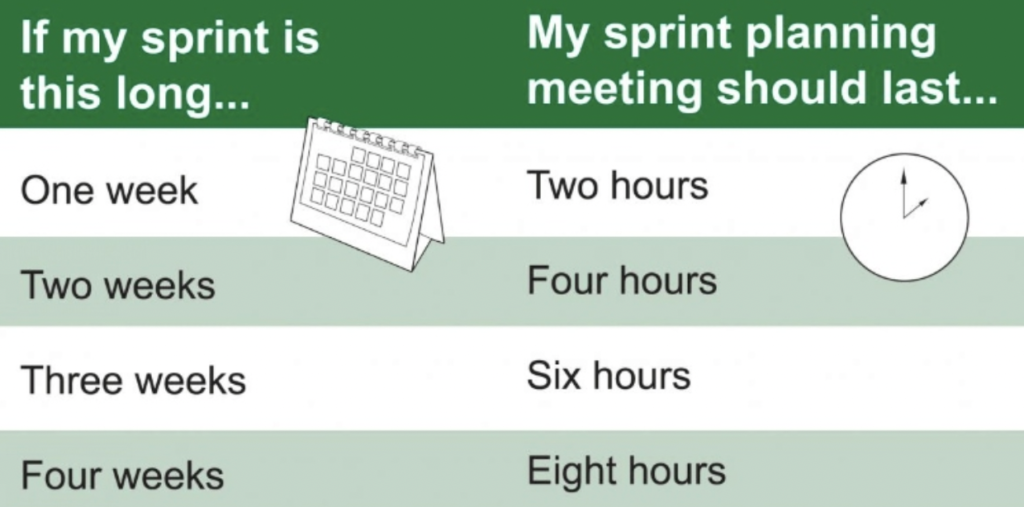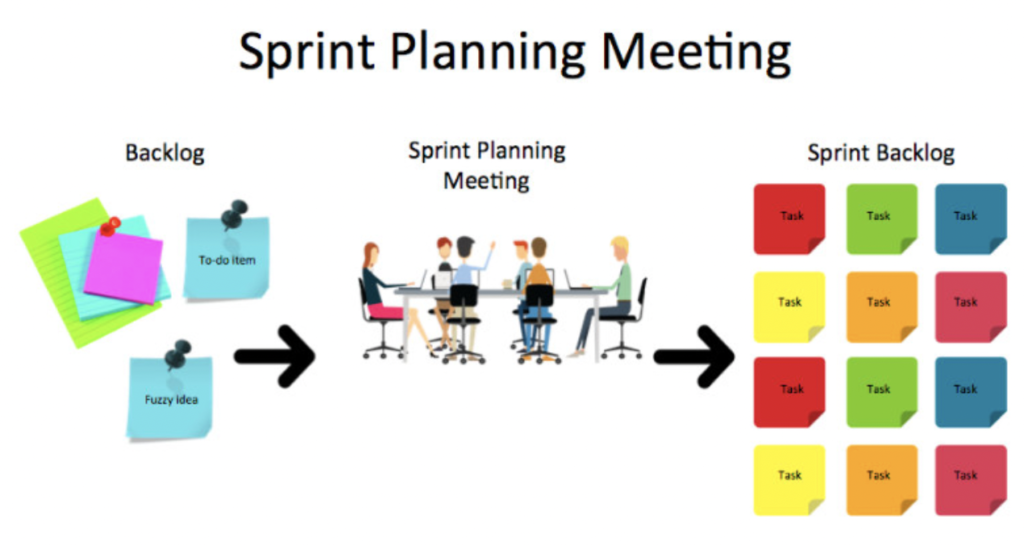Benjamin Franklin once said, “By failing to prepare, you are preparing to fail.” When we engage in work without prior planning, we are prone to passivity or, worse, undesirable outcomes. That is why Sprint Planning is always considered one of the crucial events for a successful Sprint.
Sprint planning is an important event to make a successful Sprint
What is Sprint Planning?
Sprint Planning is the initial event of each Sprint, aiming to determine the goals and detailed plans for the tasks to be accomplished. The Sprint Planning session will address the following issues sequentially:
- Define the Sprint goal.
- Select the tasks needed to achieve the set Sprint goal.
- Break down the task items (Sprint backlog), estimate them, and align on the objectives.
Who participates in Sprint Planning?
The entire Scrum Team is required to participate in the first part of the event, which involves determining the Sprint goal. However, the Product Owner (PO) may be absent in the latter part. Specifically:
- Scrum Master: It is mandatory for the Scrum Master to attend the Sprint Planning session to establish the goals and plans to complete the tasks within the Sprint.
- Development Team: They participate in order to choose the amount of work to be done in the Sprint based on the work completed in previous Sprints.
- Product Owner: The Product Owner is required to participate in the first part and may be absent in the second part but should always be available to support and clarify any doubts regarding important items for the team.
- Department managers may choose not to participate or be present to oversee the Sprint process.
What is the duration of Sprint Planning?
The maximum duration of Sprint Planning is 8 hours for a 1-month Sprint and shorter for Sprints of 3 weeks, 2 weeks, or 1 week. Let’s refer to the table below:

Duration of Sprint Planning corresponding to the length of the Sprint (Image Source: internet)
In general, a duration of no more than 2 hours per week is considered a good starting point for newly formed teams or teams gaining experience with Scrum.
The flow of a Sprint Planning session:
Part 1: Define the Sprint goal
The Product Owner proposes how to increase the value and usefulness of the product within the Sprint. The Scrum Team collectively defines the Sprint Goal (or restates the previously agreed-upon goal from the beginning of the project) to communicate the value that the Sprint will bring to stakeholders. The Sprint Goal must be agreed upon before the end of Sprint Planning.
Part 2: Select the tasks needed to achieve the set Sprint goal
Through discussions with the Product Owner, the Development Team selects items from the Product Backlog to include in the current Sprint. The Scrum Team may refine those items during this process to enhance understanding and certainty.
Determining the right amount of work items to complete within a Sprint can sometimes be challenging. However, once the Developers have information about past performance, current productivity, and a definition of “done,” they will have a better understanding of estimating their work item count.
Part 3: Break down the task items (Sprint backlog), estimate, and align on objectives

In this step, the Development Team decomposes the selected items into smaller tasks that can be completed in a day or less. Additionally, the Development Team needs to estimate the time and effort required to complete each task item.
After calculating the workload, the Developers can discuss with the Product Owner to make any necessary adjustments, either adding or removing certain items.
Tips for Effective Sprint Planning Implementation
Align the timing of Sprint Planning
The timing of Sprint Planning should be coordinated to suit the nature of the team’s work. For example, for a 1-week Sprint, the typical timing for Sprint Planning is Monday morning or Friday afternoon.
Determine the team’s available time for the Sprint
It’s essential to determine the amount of time the entire team has available for the Sprint, as this will help accurately calculate the workload the team can handle. If the calculation is inaccurate, it can result in the team taking on too much or too little work, affecting overall productivity.
Each team member should provide their availability for development work during the upcoming Sprint, following these steps:
- Communicate the number of days off during the upcoming Sprint.
- Calculate the number of hours available during the Sprint: Number of working days * 6.4 (One working day is considered 8 hours, but the actual focused work time per person is typically around 6.4 hours after accounting for unexpected activities like impromptu meetings, email responses, coffee breaks, etc.).
After obtaining the availability for each team member, sum up the total available time for the team during the Sprint.
Members proactively review and prepare their own tasks
One of the characteristics of a Scrum Team is self-management. Each team member takes responsibility for reviewing and preparing their own tasks before the Sprint Planning session. This proactive approach ensures that the Sprint Planning session can be conducted quickly and effectively.
Perform Regular Grooming
Grooming is a technique used in managing the Product Backlog. The items in the Product Backlog vary in size, level of detail, and often need to be refined before they can be worked on.
The Scrum Team can allocate about 10% of the time within the Sprint to groom the Product Backlog for upcoming releases. Proactively thinking about the work beforehand and being prepared rather than reactive is the key to effective Sprint Planning sessions.
Collaboration among team members
As stated in the Agile manifesto, “Individuals and interactions over processes and tools,” the Sprint planning itself is a result of collaboration among all members of the Scrum team. The secret to a successful story lies in having multiple perspectives. A team is typically a collection of members with diverse skills, and each position brings a unique viewpoint and insights into challenges that others may not foresee.
